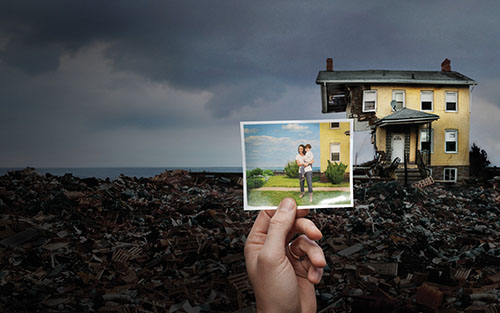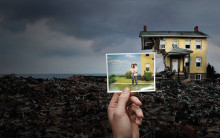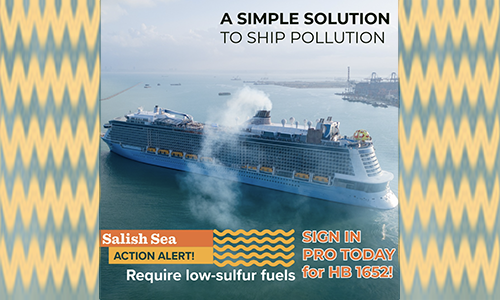Thursday, May 28, 6:30-8:30 p.m., Orcas Island Public Library
— from Gretchen Krampf —
 We continue our series, “The Years of Living Dangerously,” with episodes 5 and 6.
We continue our series, “The Years of Living Dangerously,” with episodes 5 and 6.
In Episode 5, “True Colors” Olivia Munn learns about ocean acidification and the proposed West Coast coal export terminals that would nearly double US coal exports. She follows the new governor of the State of Washington, Jay Inslee, as he makes the fight against global warming a top priority in his first year in office, using his executive powers when necessary to get around Republican climate-change skeptics in the state legislature. Inslee says, “We’re not going to wait until the last person in Washington understands physics and chemistry in order to confront climate change” and he “urged the media to be more aggressive in covering climate threats since we face ‘civilizational suicide’ if we fail to act.
Columnist Mark Bittman of The New York Times follows up on the post-Hurricane Sandy rebuilding story, the global rise in sea level, and what is being done to better prepare the East coast for storms and surges. He examines the Dutch system of flood management and discovers that, in New Jersey, rebuilding so close to the ocean is environmentally and financially unsustainable. Governor Chris Christie refuses “to acknowledge the role that climate change played in amplifying the impacts” of Sandy. Bittman also finds that Christie pulled New Jersey out of RGGI after meeting with the Koch brothers, who then funded campaign advertising for Christie.
In Episode 6, “Winds of Change” America Ferrera reports on how public policy has supported the growth of wind and solar power in Kansas, and how oil and gas companies, with lobbyists and allies like the Heartland Institute and the American Legislative Exchange Council (ALEC) oppose these policies. Meanwhile, Bittman discovers that extracting natural gas through fracking delays our transition to renewable energy and that fracking wells leak a large amount of methane, a powerful greenhouse gas, which makes fracked natural gas as dirty as, or dirtier than, burning coal.
And our films will be followed by a conversation co-hosted by Gretchen Krampf, Thrive Orcas Island. This week Donna and Michael Riordan will join her and speak from their work and expertise in the Salish Sea. Back in February 2012, when Donna and Michael Riordan first learned about plans to build the largest coal transport facility in North America at Cherry Point, WA, they thought it was a joke. After realizing it was not, they tapped into their pre-Orcas backgrounds in science policy (Donna), and science and publishing (Michael) to inform the Orcas community about it through the Orcas NoCoalition. They also are now members of the San Juans Alliance, a consortium of organizations across the San Juans dedicated to ensuring a safe and clean environment. In addition, Donna created Research Now, a non-profit research organization dedicated to generating best available science for policy decisions. Michael now serves on Research Now’s Science Advisory Board, is author of “The Hunting of the Quark” and coauthor of “The Solar Home Book,” and writes about science, technology and public policy from beautiful Orcas Island.
**If you are reading theOrcasonian for free, thank your fellow islanders. If you would like to support theOrcasonian CLICK HERE to set your modestly-priced, voluntary subscription. Otherwise, no worries; we’re happy to share with you.**








